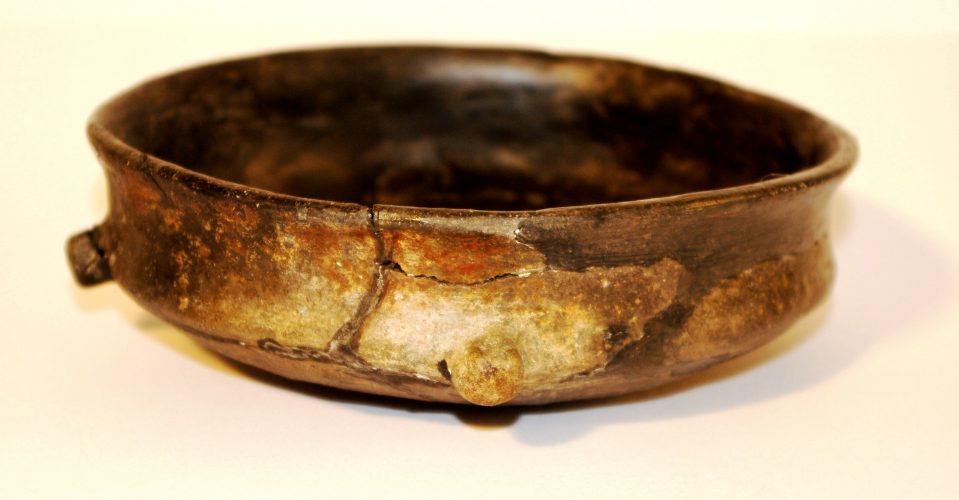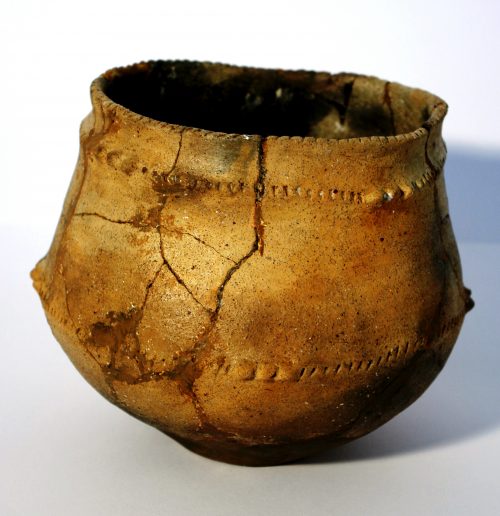The Department of Archaeology at the FF UHK also pays attention to the investigation and studies of intercultural contacts, including those during the Neolithic and Aeneolithic periods. J. Kovárník noted the presence of complete vessels of the Moravian-East Austrian group of the Painted Pottery culture and of a sunken-floored dwelling with a post supporting structure from the settlement at Předměřice nad Labem (sunken-floored hut, feature 97/08) belonging to the Stroked Pottery culture (STK) dating from the late Neolithic in the territory of eastern Bohemia and interprets these as an influence from South Moravia or Lower Austria (approximately 200-300 km distant), the MOG Ia phase, especially in areas with the occurrence of central settlements with rondels of the STK, the STK IVa sub-phase. Painted Pottery of the MOG Ia phase is also known from a prehistoric hilltop settlement near České Lhotice. Vessels and fragments of Samborzec-Opatów type pottery (Chrudim) as imports from Little Poland (distance of ca. 300-400 km) and fragments of vessels of the Oberlauterbach Group (Jaroměř) from Lower Bavaria (distance of ca. 250-300 km) are also known from the territory of eastern Bohemia. The above contacts are also proved by the raw materials used for the manufacture of chipped stone industry (Krakow-Czestochowa Jurassic flint from Little Poland, Krumlov Forest-type chert from South Moravia, Bavarian tabular chert (Plattensilex), Szentgál-type radiolarite from Transdanubia, obsidian from eastern Slovakia, etc.). Feature no. 118/08 at Předměřice nad Labem also yielded finds of the Moravian-East Austrian Group, the MOG IIa phase dating from the Early Aeneolithic and of the Malice culture, again from the territory of Little Poland. The presence of Bošáca pottery at Dohnaličky, Obědovice or Plotiště nad Labem proves continuous contacts with southern (and southeastern) Moravia during the Middle Aeneolithic (or the Late Aeneolithic according to the Moravian periodisation). This is unambiguous evidence of mutual contacts between the bearers of these cultures and cultural groups including the creation of a network of Neolithic and Aeneolithic trails connecting important settlement chambers in the water catchment areas of major European rivers – the Elbe, the Oder, the Vistula, the Danube or possibly also the Tisza.
CONTACT
doc. PhDr. Kovárník Jaromír, CSc.
e. jaromir.kovarnik@uhk.cz
t. +420 493 331 269

Předměřice nad Labem, okr. Hradec Králové. Část hřibovité nádoby moravsko-východorakouské skupiny fáze MOG Ia s motivem červených a žlutých pruhů (podle J. Kovárník et al. 2011; Muzeum východních Čech Hradec Králové).

Předměřice nad Labem, okr. Hradec Králové. Miska moravsko-východorakouské skupiny fáze MOG Ia (podle J. Kovárník et al. 2011; Muzeum východních Čech Hradec Králové).






